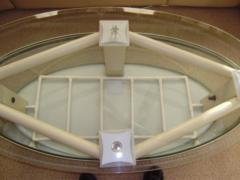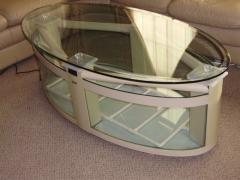FreshwaterTropical
Aquarium Advice FINatic
- Joined
- Sep 23, 2011
- Messages
- 700
Hats the purpose of an ugf? Is it beneficial enough to actually use one? Can you have live plants with a ugf?
This is untrue based on my personal observations, by viewing the tank from below while the siphon tube was at work. As far as low maintenance goes, the Hamburg mattenfilter has to be the king. They can go a year or longer with no maintenance.Siphoning through the uplift tubes only removes the debris immediately adjacent to the tube (a few inches), not the whole area under the plate.
 here are some pics of my aquarium ugf. it's run by 2 power heads. the pvs pipe has holes on the bottom that sucks the water through the grid. the nice thing about this is that i can stick the wand between the pipes to get the gunk out when i do weekly cleaning. it's been set up for 10 months now. i have about 2-3 inches of small gravel on the bottom. the tank is 45 gals. it's 56 inches long and about 23" wide. i have alot of bottom surface that bb has grown on. no ammonia problems since it's cycled. i have about 35 live plants that are doing great. i have rams, dwarf gouramis, glo fish, sailfin mollys, and sa bumblebee cat fish.
here are some pics of my aquarium ugf. it's run by 2 power heads. the pvs pipe has holes on the bottom that sucks the water through the grid. the nice thing about this is that i can stick the wand between the pipes to get the gunk out when i do weekly cleaning. it's been set up for 10 months now. i have about 2-3 inches of small gravel on the bottom. the tank is 45 gals. it's 56 inches long and about 23" wide. i have alot of bottom surface that bb has grown on. no ammonia problems since it's cycled. i have about 35 live plants that are doing great. i have rams, dwarf gouramis, glo fish, sailfin mollys, and sa bumblebee cat fish.
To answer the questions, the purpose is to provide filtration. Bacterial filtration as the water is drawn through the substrate and mechanical as it holds material until you remove it with a gravel vacuum.Hats the purpose of an ugf? Is it beneficial enough to actually use one? Can you have live plants with a ugf?

